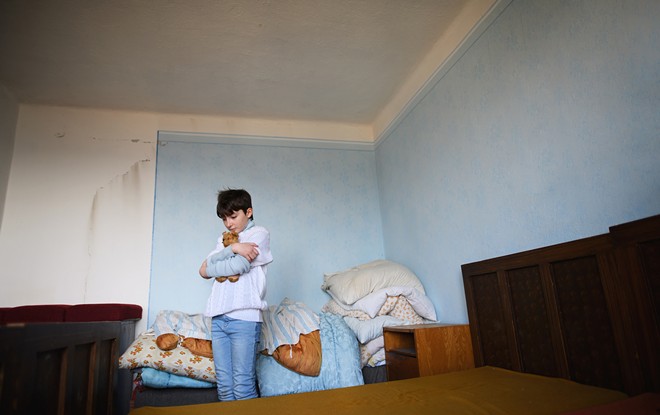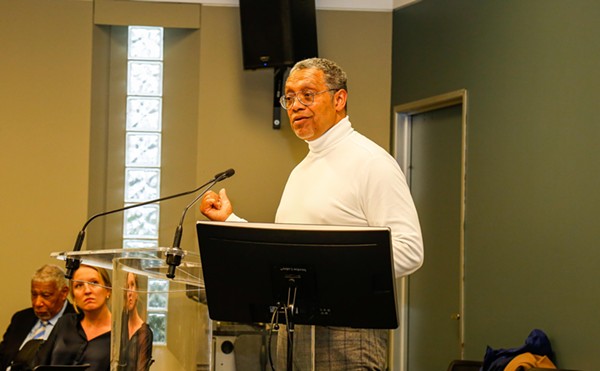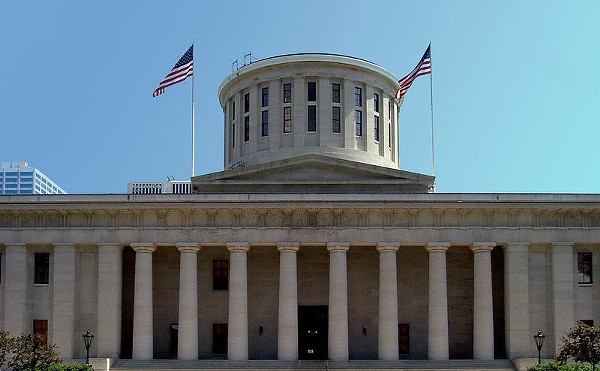The Evolution of Ohio's Children Services System
By Mary Kuhlman, Ohio News Connection on Wed, Dec 8, 2021 at 9:46 am
[
{
"name": "Ad - NativeInline - Injected",
"component": "38482495",
"insertPoint": "3",
"requiredCountToDisplay": "5"
},{
"name": "Real 1 Player (r2) - Inline",
"component": "38482494",
"insertPoint": "2/3",
"requiredCountToDisplay": "9"
}
]
The History
Children Services is tasked with protecting the safety, well-being, and permanency of children and families, but some experts say it has not escaped its origins as a system that separates.
Alexandra Citrin, senior associate at the Center for the Study of Social Policy, explained there is a long-standing belief foster care is the best and only intervention for families struggling with abuse or neglect, and she said separation particularly impacts families of color.
"At the beginning, the system didn't even serve children of color because they weren't deemed worthy," Citrin explained. "We then see the children services system separating Native children from their families and their culture to try and force assimilation, and separating Black children at a very high rate."
Citrin pointed out oppression and racism within children services are connected to systemic policies excluding families of color and do not create the social support families need.
The disparities are evident in other public systems rooted in racism, including juvenile justice. Currently, Black children represent 36% of the children in foster care in Ohio, while they represent 14% of children in the general population. Black and mixed-race children also experience more placements in the foster system than their white peers.
Research has found racial bias among people who report children to Children Services and among the caseworkers who assess a family's situation.
Robin Reese, executive director of Lucas County Children Services, said her staff is laser-focused on protecting children from abuse and neglect. When the focus is affected by poverty and the overwhelming number of cases workers are managing, she said it can unintentionally lead to racial disparities.
"We have some of the best people in this field, but the truth is, all of us come in with biases," Reese observed. "It impacts the way we do the work. And so, if you're a person of color, and you're poor, the risk of you having involvement in child protection is raised."
And Citrin noted the way child protection is funded also contributed to the history of separation. She emphasized prior to the passage of the Family First Prevention Services Act, federal funding streams including services to help keep children with their families were inadequate.
"Title IV-E up until very recently could only be used for foster care placements," Citrin stressed. "You didn't have the federal funding stream for child welfare services to serve families where children were able to remain home and in their community."
Title IV-E is the main federal funding source for child welfare systems. Citrin added states have also been limited in their ability to fund prevention services as child welfare agencies have to first pay for children who are placed in foster care as federal financing only covers part of the cost.
The Present
As policymakers and child-welfare leaders move to transform the foster-care system, advocates say there are misconceptions about the work going on.
Susan Walther, director of Warren County Children Services, explained a majority of kids coming into care are from families struggling with everyday problems, compounded by the stress of making ends meet.
"Children who grow up in low-income situations can be extremely well-cared for," Walther acknowledged. "But maintaining food in the home at times, or joblessness, homelessness, these are struggles that can be misconstrued as neglect."
Robin Reese, executive director of Lucas County Children Services, said as poor people engage with more public systems, the systems themselves mistake poverty for child neglect. And neglect, she added, is a broad category, ranging from truancy to unstable living conditions.
"We have a housing complex that's been in the news because of poor conditions," Reese observed. "It's all owner-driven, they just haven't fixed anything. And it's of no fault of the people that are living there, but that puts them at risk of having Child Protection involvement."
Roughly 15,000 children in Ohio are currently under the care of children services, and thousands more are being served at home.
Alexandra Citrin, senior associate at the Center for the Study of Social Policy, said removing kids from struggling families is not always the best answer. She explained supports such as housing, food assistance and counseling services keep families together, which produces better long-term outcomes.
"Separation is harmful for children and families," Citrin emphasized. "Separation is traumatic, and we don't necessarily see a great outcome for the kids who then just linger in care. "
Walther added caseworkers strive to keep families together, and place children with kin when possible instead of in stranger foster care.
"Courts and police are the only people that can remove children from their home, and people get very angry and very upset with people in child welfare," Walther noted. "And it's a hard job. I don't think they realize how much child-welfare workers care."
The Future
In a system plagued by a history of disparities, Ohio's child-welfare workers and children's advocates say it is time to reimagine child protection.
Robin Reese, executive director of Lucas County Children Services, contended transformation begins with defining the role of child protection. She explained it has become "everything to everyone," with work often falling into the realms of juvenile justice and mental health.
Reese described the whole child-protection system as completely overwhelmed.
"Is the state listening? I think they're listening," Reese stated. "But in child protection, we've got to scream louder, because I don't think that they understand the immediacy of the issue and the weight of child protection."
Susan Walther, director of Warren County Children Services, advocated not only for improving foster care, but for entire system transformation. She said they are committed to keeping kids in families.
"Child welfare history can be generational," Walther pointed out. "How do we change this and empower these families and have kids who are able to be functioning in their own communities, staying in their own schools, staying with their families?"
Walther noted connecting families with work programs, food assistance, mental health care and other wraparound services can keep families safely and successfully together, and often prevent the need for child protection involvement.
Alexandra Citrin, senior associate at the Center for the Study of Social Policy, argued transformation needs to start outside the foster-care system, with flexible funding for partner agencies, and more collaboration.
"Our Department of Health, our Departments of Medicaid, our early childhood systems, Department of Mental Health, Addiction Services, Developmental Disabilities... to be able to work together outside of their silos, and really create a comprehensive continuum of supports and services that meets the diverse needs of the community," Citrin outlined.
Walther added structural racism must also be addressed to get better outcomes for children and families. She emphasized it means viewing transformation through a racial equity lens, to better connect with families of color.
"It's important to recruit caseworkers of different races and nationalities," Walther stressed. "There is a trust people have when they see an image of themselves. So, I think it's important to have that in county agencies, because there is a mistrust at times."
SCENE Supporters make it possible to tell the Cleveland stories you won’t find elsewhere.
Become a supporter today.
Scroll to read more Cleveland News articles
Newsletters
Join Cleveland Scene Newsletters
Subscribe now to get the latest news delivered right to your inbox.













